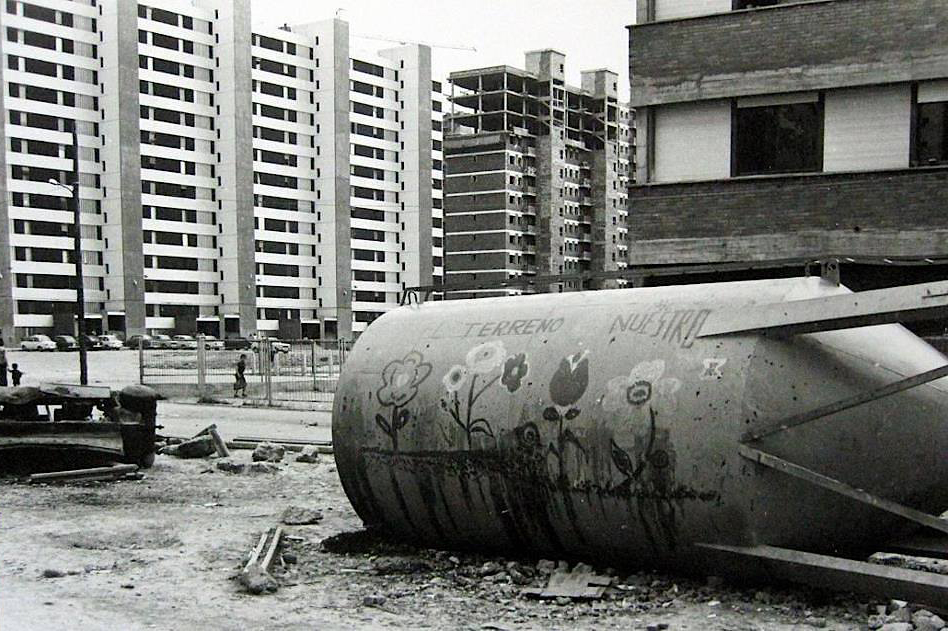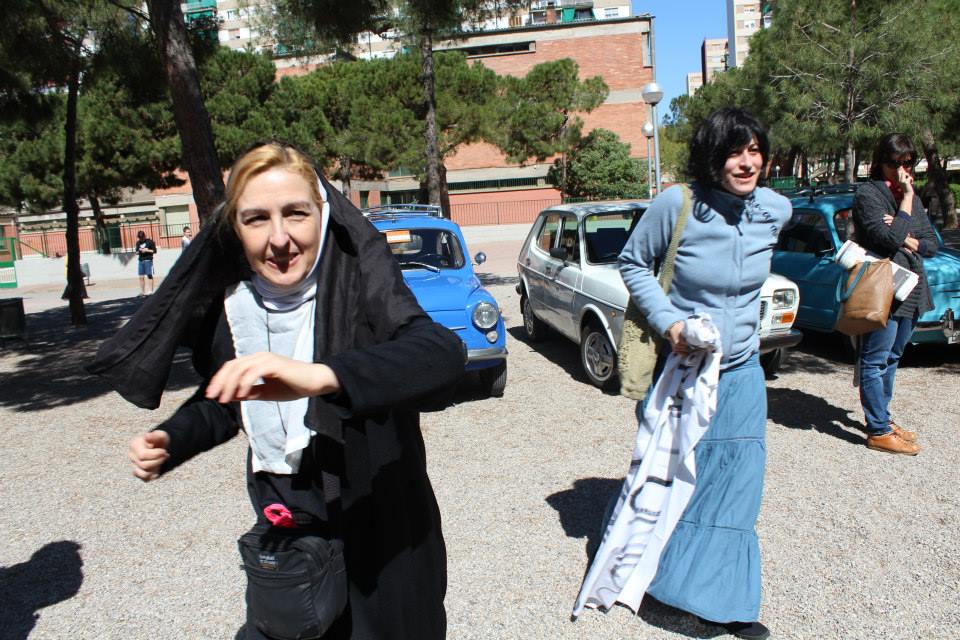

In early 2013, the Bellvitge Residents Association and the Centre d’Estudis de l’Hospitalet (CELH) launched “Bellvitge 50”, a call to citizens to prepare for the celebration of the neighborhood’s 50th anniversary in 2015. LaFundició began to attend these monthly meetings and to put on the table that certain institutional commemorative logics were still being reproduced by grassroots movements: hegemonic, patriarchal, monolithic and celebratory discourses that make the conflict, the plurality of perspectives and the role of subaltern groups invisible.
The game allows you to perform the past in the present, building plural and mutable stories in each game.
Thinking about how to join this process, the idea of the role-playing game appeared, the contact with the Necronomicon’s Role-Playing Association helped us to understand, develop and adapt the dynamics and mechanisms of role-playing games in relation to the process of historical commemoration. The game allowed us to perform the past in the present, build plural and mutable stories in each game and according to each player and bring history to the public sphere as a process of collective construction.
Live role-playing (known in the Anglo-Saxon world as larp, acronym for Live Action Roleplaying) is defined as «a modality of role-playing in which the representation of the characters by the players is carried out in real time and in a staged manner, sometimes even with the appropriate attire, such as costumes and harmless reproductions of swords or other types of weapons» (Wikipedia). Unlike traditional or tabletop role-playing games, in live role-playing games players must carry out their actions instead of declaring them. Live role-playing players act, move, speak and represent their character as an actor on a stage, only without a prior script.

Six particularly significant moments or events were selected, from different perspectives, from the history of the neighborhood that ranged from 1969 to a hypothetical future in 2065, as well as a series of characters were defined that would develop throughout the different games in a manner consistent with the cultural, social and political evolution of the context and of the country itself.
The history of Bellvitge serves to reflect on a broader historical and social framework.
The script traces a journey that portrays Bellvitge from the years of Franco’s development to the dismantling of the welfare state by neoliberal policies, which is clearly exemplified in the closure of the CAP La Marina and its subsequent occupation by the residents.
The history of Bellvitge serves us as a particular case to reflect on a broader historical and social framework: the social, political and cultural changes in Catalonia, and especially in migrant, peri-urban and working-class contexts, from the last years of Francoism and the transition to the present.
The creation of a live role-playing game “based on real events” is a very complex undertaking and poses many difficulties, but this has the advantage that many people can participate with very diverse degrees of involvement: from contributing their testimony in the creation of characters, arguments and settings, through acting as non-player characters, in the production of the props, in the creation of the argument itself, to simply playing! (which is the most fun).
The role allows to construct multiple, decentralized and non-linear historiographical accounts (there are as many narratives as players and plays!), as well as to approach historical memory in a dialogical and experiential way, which is why it is a useful tool when constructing non-hegemonic discourses about memory.

The work process of Bellvitge live role-playing is articulated around three axes:
A collaborative and open process of inquiry into the history of the neighborhood that includes conducting interviews, recovering and consulting documents (texts and images), creating spaces for debate, discussion and discussion, creating texts and graphic materials.
Each scene involves a process of collective elaboration with different people and formal and informal groups that are involved in different levels of the game, from research, scripting, construction of props or the performativity of the scenes in public space.
The community processes of research and creation materialize and perform in the public space in the different calls to play each of the scenes.